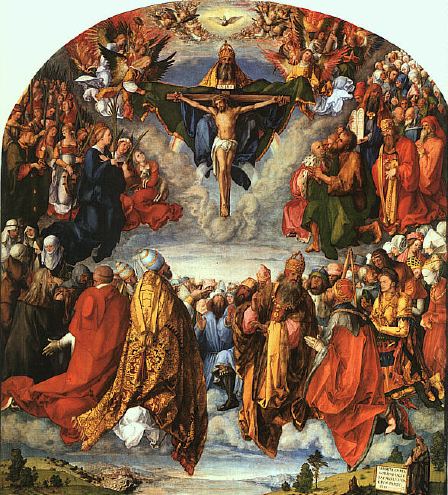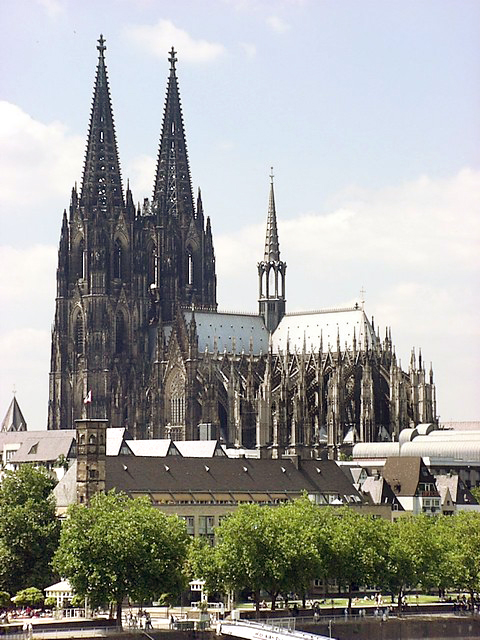It’s all very well to talk about monasticism as something we COULD learn from today. But is anyone ACTUALLY learning? Short answer: Yes. This is the last clip I’ll post from the monasticism chapter of my Medieval Wisdom: An Exploration with C S Lewis:
For much of this chapter, I have been treating modern appropriation of monasticism as a “What if?” The truth is, however, that despite the plunging statistics in traditional Roman Catholic monasticism in the West, recent decades have seen a renewed and widespread interest in adapting parts of the medieval monastic heritage for modern use.
Do the spiritual resources of the monastic tradition have anything to offer to the person who has made commitments to spouse and family, or is pursuing a secular vocation—or someone who simply does not desire, or does not sense God’s call—to make the lifelong vows of celibacy, poverty, and obedience required of monastics? History gives a resounding “yes.” After all, monasticism was never intended to encompass a different set of spiritual values than those followed by all Christians. It offered a means of living the Christian life with more single-minded intensity.
For nearly a millennium, there have been people (one might call them “monastic groupies”) who have connected themselves to a monastery in a less formal way, dedicating themselves to certain spiritual disciplines while remaining in the world. This option of becoming an oblate of a monastery has enjoyed a huge surge of popularity in recent decades as both Catholics and Protestants have sought in monastic spirituality something they feel is missing in their own lives. Today there are more oblates than monks and nuns.
The longing for connectedness
Also more numerous within the Catholic fold—and arguably no less in the spirit of Benedict himself—are members of a cornucopia of mission-driven ecclesial communities, with names like the Christian Life Movement, Chemin Neuf (A New Way), and the Emmanuel Community. In June 2006, Pope Benedict XVI met with over 100 new ecclesial groups in St. Peter’s Square—a small subset of the worldwide effusion of such groups.
Each of these is committed to living under a rule—some communally and some in the regular spheres of family and work—and to serving the world in its own way. Many include married couples along with priests and individuals who have taken vows of celibacy and poverty. Though the ecclesial communities are not deliberately “monastic,” they are meeting needs in Christians that in previous centuries could only have been met by joining a monastery.
Though so many of us yearn to be deeply rooted in Christ in a way that reflects his holiness, and to share this rooted, holy life with a close community, we simply find this hard to do in the modern West. Our culture pushes us to strive for individual fulfillment, to consume more and more, and to spend much of our lives working to pay for that consumption. The result has been a world of constant mobility, alienation, and loneliness. Quasi-monastic movements like the Catholic ecclesial communities reveal a deep desire for connectedness—a sense that we need to live a regular, disciplined life of devotion to God, and that we can’t do it alone.
In Protestant circles, this monastic impulse can be seen especially in the phenomenon of intentional communities. Among these, the self-described “new monastics” have taken their cue (as I mentioned) from philosopher Alasdair MacIntyre. In his influential 1981 book After Virtue, MacIntyre compared the state of the West to the decadence of the late Roman Empire, and called for “another—doubtless very different—St. Benedict.” In 1998 Jonathan R. Wilson picked up MacIntyre’s ideas and put them into more explicitly Christian form in Living Faithfully in a Fragmented World. He fleshed out a call for a “new monasticism” that would allow the church to truly be the church in this troubling, fragmented age.
In a time when, it seems to Wilson and the new monastics, “many parts of the church are sinking with the culture and doing so without any resistance,” Benedict’s wisdom has again become a fount of inspiration and guidance. In School(s) for Conversion: 12 Marks of a New Monasticism (which emerged from a 2004 meeting of “new monastic” communities) leaders came to the conclusion that at least some Christians must engage in some form of separation—not only from “culture at large,” but also from the increasingly compromised church—to model a life of true devotion and obedience to Christ. In this, they would imitate Benedict, who wrote in his rule, “You should become a stranger to the world’s ways.”
But historically, of course, monastics have not stopped at separation—nor do these “new monastics.” Benedict founded a monastic way in which hospitality to the stranger and the needy is a prophetic witness to the world. Thus these new quasi-monastic communities have dedicated themselves not only to contemplative disciplines and submission to a communal rule, but also to solidarity with the poor, racial reconciliation, and peacemaking.
Passing fad or promising future?
Of course, members of new communities, both Catholic and Protestant, are aware that this current love affair with monastic forms of worship and life can amount to another unhelpful “fad” as people run after books and retreats. A few candles and a few chanted prayers do not a prophetic community make.
Church of the Servant King’s Jon Stock says, “It’s awful hard for us Westerners not to approach Benedict as another technique, another consumable, another path to self-actualization.” Stock also admits that the new monasticism, focused as it often is on social activism, can lose its connection to the larger church and to worship practices anchored in the church—a concern shared by the Roman Catholic hierarchy. Asbury Seminary’s Christine Pohl admits that Benedict’s four pillars—“life under a rule, life lived in commitment to a particular people and place, obedience, and ongoing conversion”—present a challenge to modern Western Christians, with our “wariness of vows and commitments, and our individualistic and mobile lifestyles.”
Time will tell whether the “new monastic” communities will survive, whether the traditional Benedictine monasteries will continue to thrive, and what new forms of counter-cultural, prayerful, prophetic community will arise to inspire Christians and shake the culture. But for now, the future of Benedict seems as bright as his past.
Related articles
- But what did monks DO all day? The holy routines of medieval monasticism (gratefultothedead.wordpress.com)
- Why we need something like monasticism again today – part I (gratefultothedead.wordpress.com)
- Why we need something like monasticism again today – part II: Moral flabbiness (gratefultothedead.wordpress.com)
- Why we need something like monasticism again today – part III: The moral argument concluded (gratefultothedead.wordpress.com)
- Paralyzed by grace? What we can learn from monastic discipline (gratefultothedead.wordpress.com)


 Medieval Wisdom for Modern Christians
Medieval Wisdom for Modern Christians







Pingback: First Links — 11.12.13 - Hardcore Catholic
Pingback: First Links — 11.12.13 » First Thoughts | A First Things Blog
Pingback: Monasticism for the Rest of Us | Notes from Mere O
a Trilogy of knowing
My world Is so small
When the senses seeks out all the attention and become my charged intentions
identity cramped into the little bit of pleasure to meet my silly expectation for fulfillment this very instant
and truth becomes the figment of my imagination
My world and the universe
With feet on the ground and the wonder to choose in God’s universe
As the lily of the field mentoring the life lessons
And the stunning beauty reframes the gift of life into simple intuition
Just made in the image
Our world and the universe
Today another new day of eternity within the pull of gravity celebrating all that is down to earth
Were thinking and thoughts pass like clouds and all the concerns are just imaginations
In our broken worlds and good intentions –
We are loved beyond our concepts and home made distractions
our worlds – thank God – are not the centre of the universe